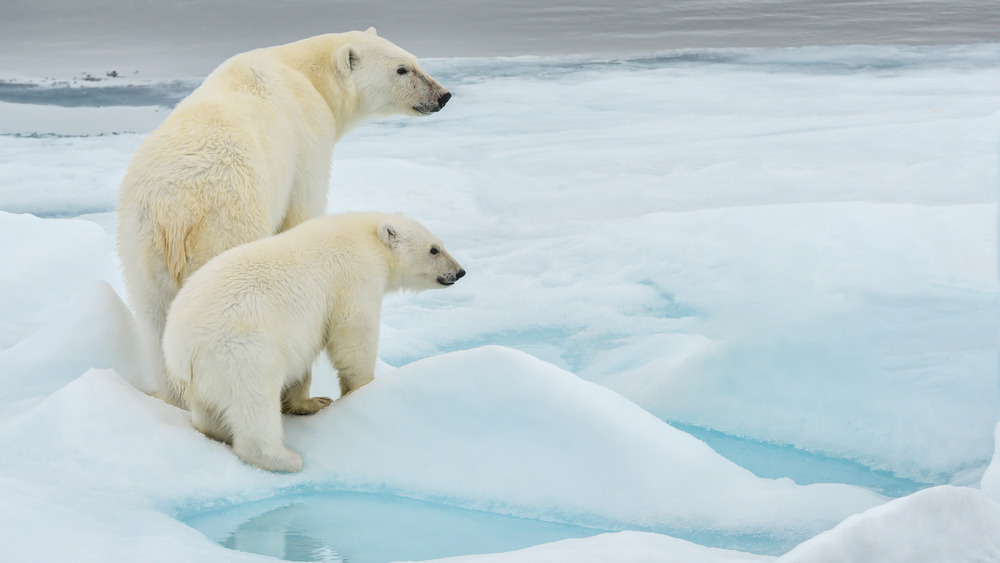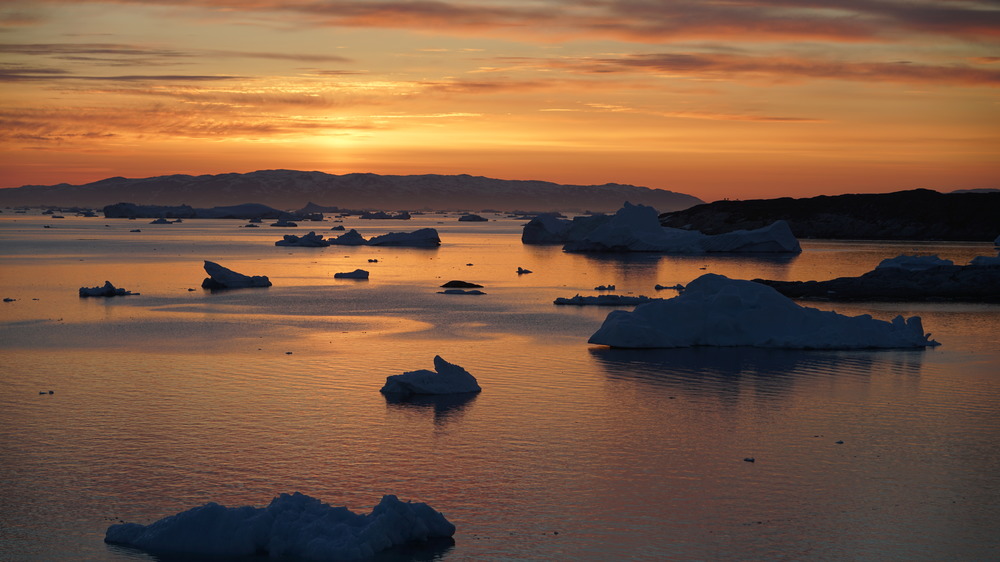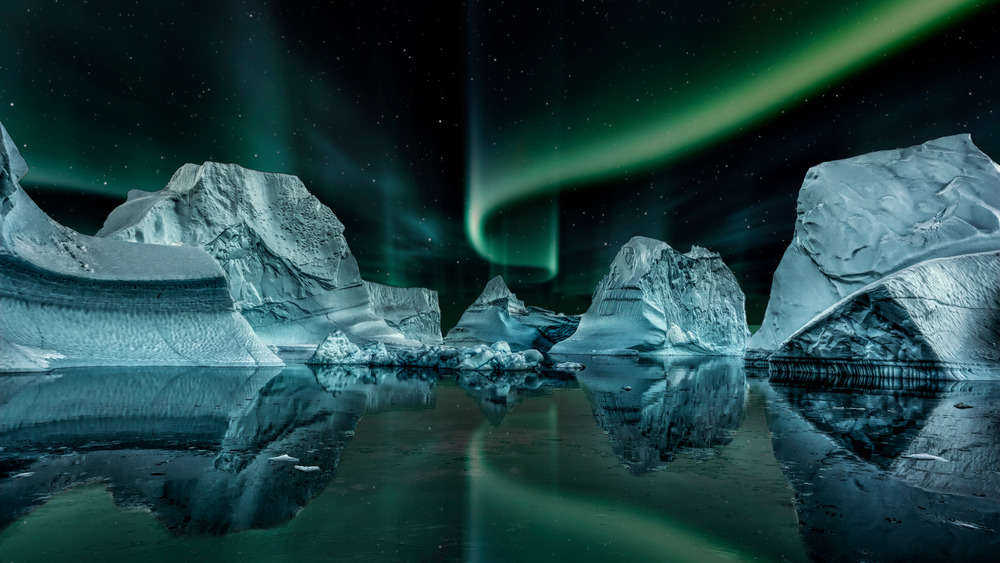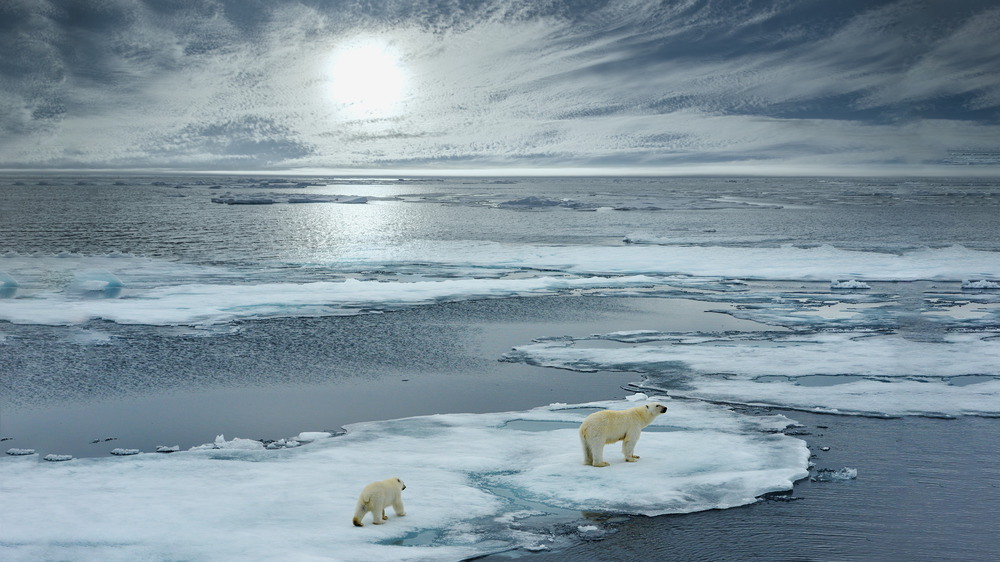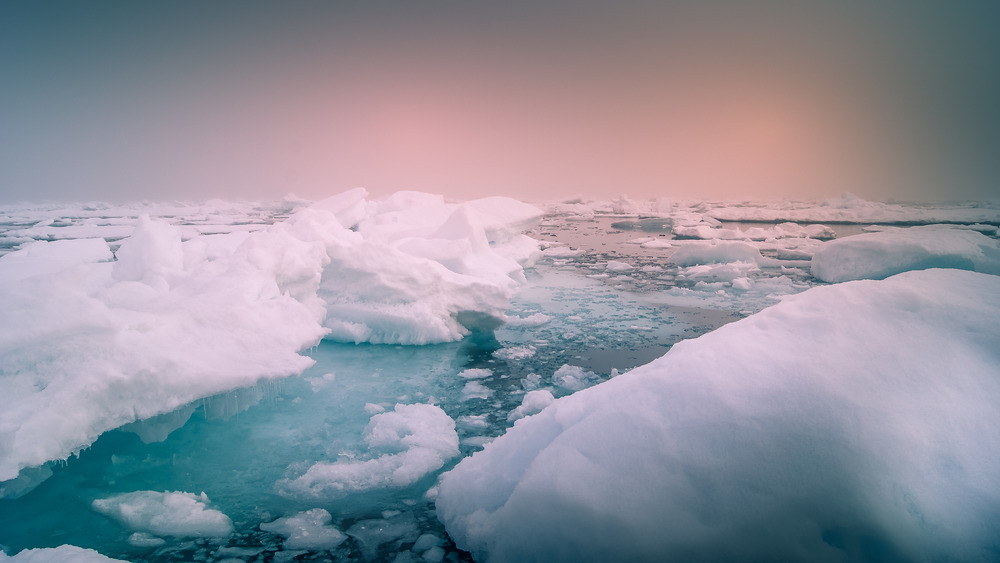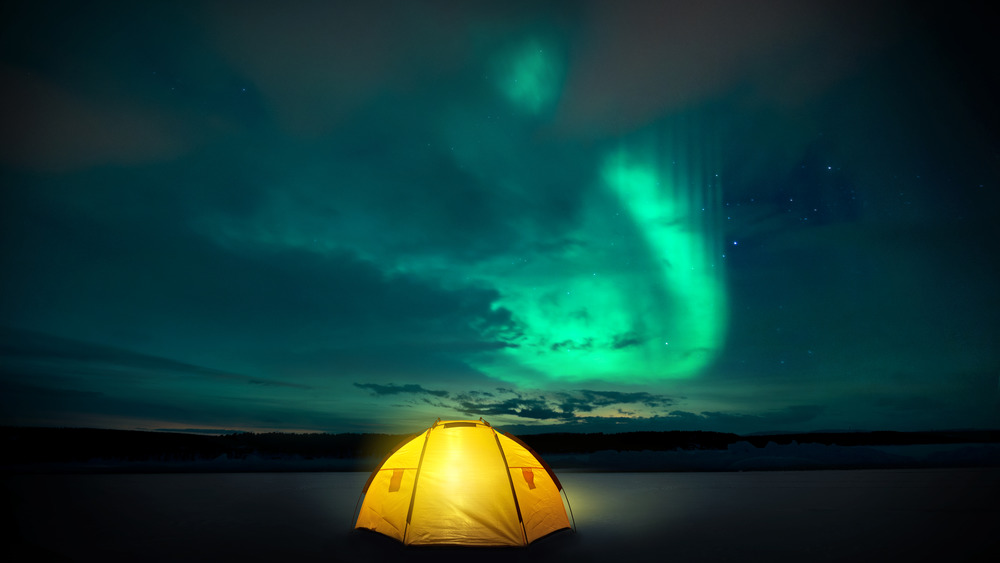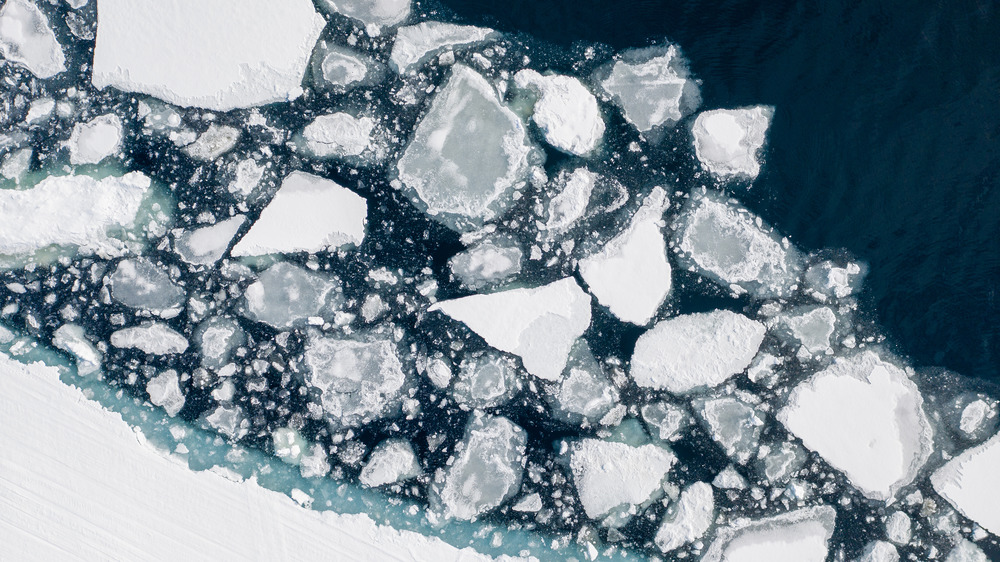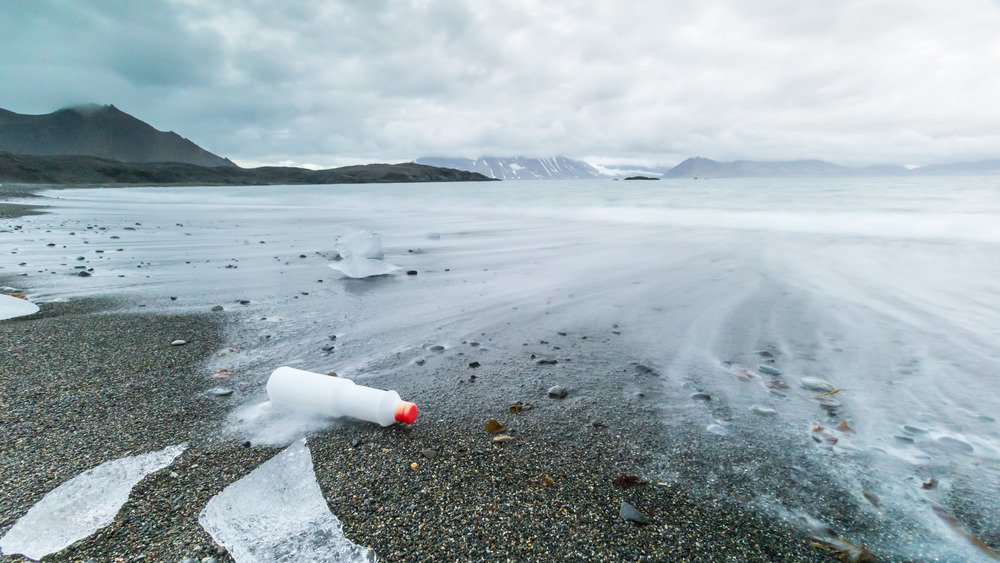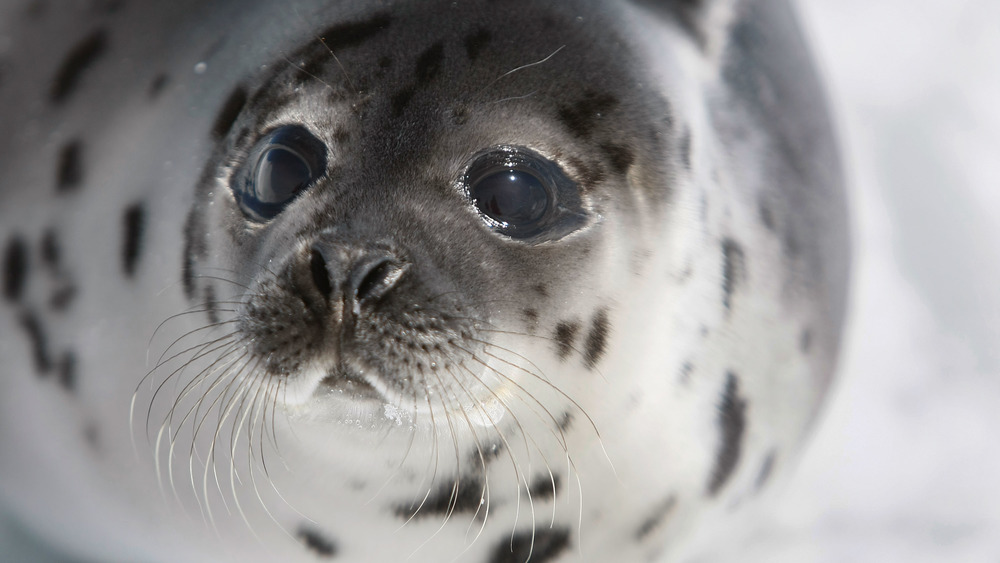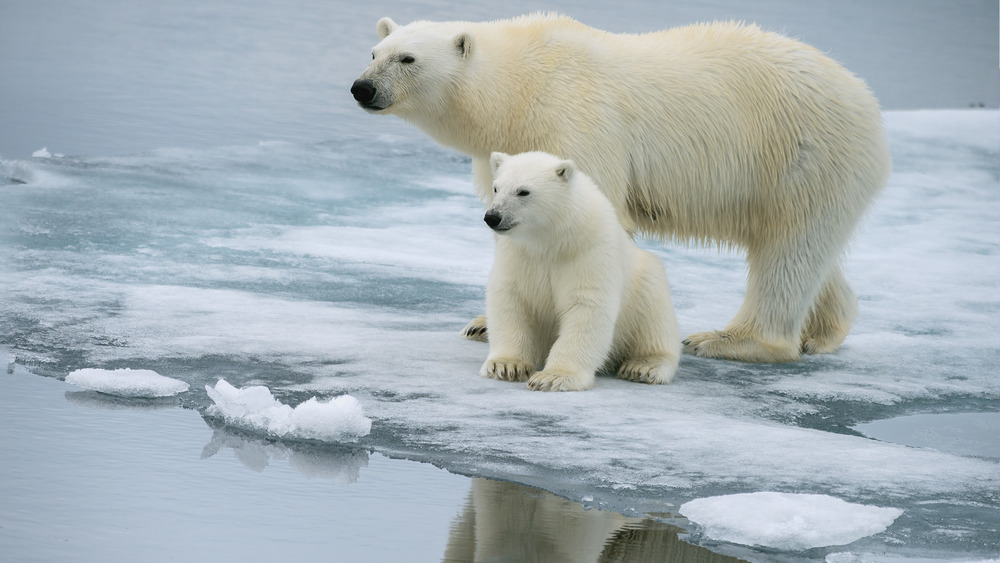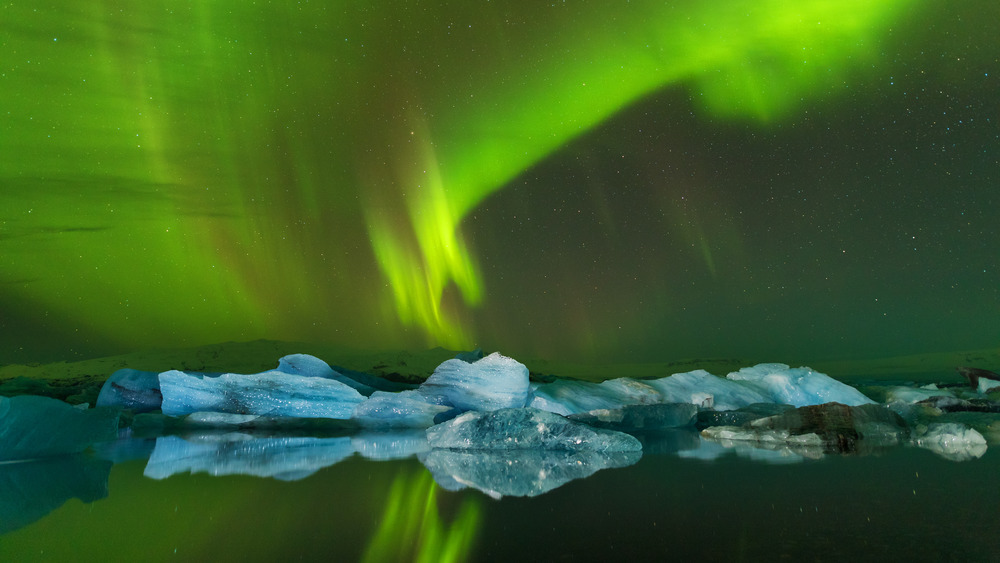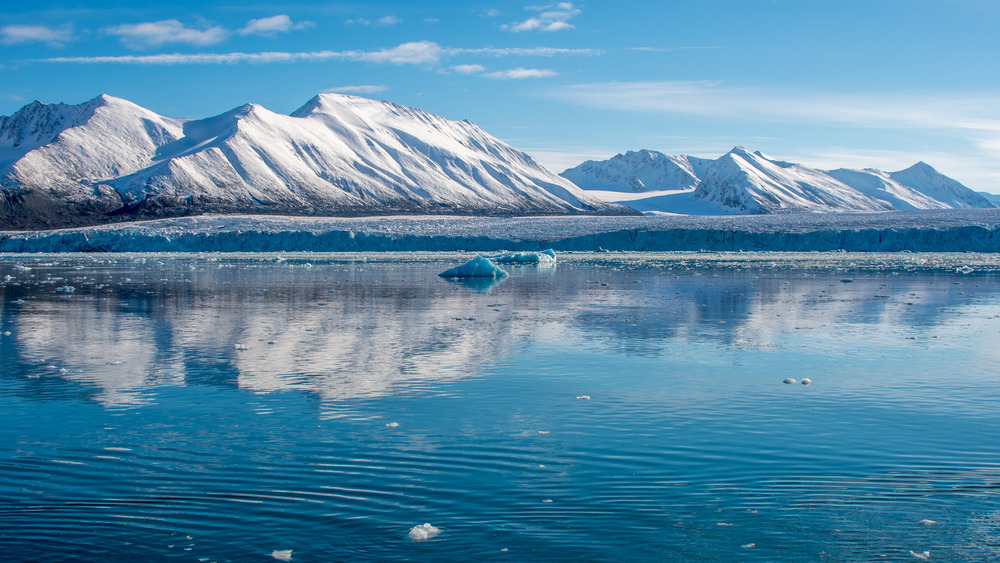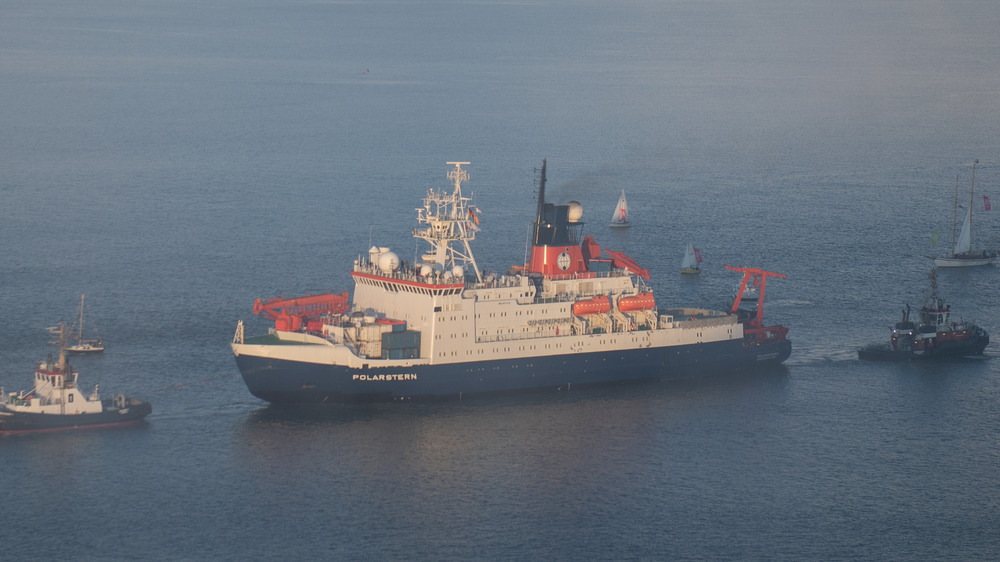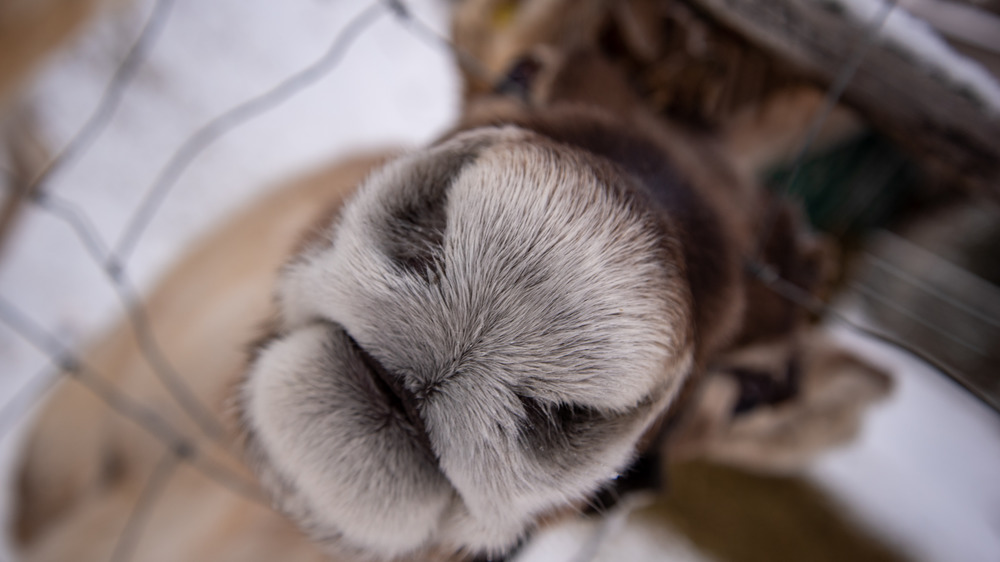What It's Really Like At The North Pole
The idea of the "North Pole" is surprisingly complex, and that's not even taking into account the arguments about whether or not Santa Claus really lives there. (Spoiler Alert: he doesn't. He lives in the Caribbean, because which would you choose, sand or snow?) One definition, says Scientific American, is the point at the very tippy-tippy-top of the planet. That's also called geographic north, or true north, and it's the place explorers are aiming for when they say they're heading for the north pole. Then, there's also the instantaneous north pole, which is the point where the planet's axis meets the surface — and it's a little different. Since the planet wobbles a little bit as it rotates, the north pole moves in a circle.
There's also magnetic north. That's where the Earth's magnetic field is vertical: when you're standing at that very spot, a compass needle would point to your feet. And then, there's a geomagnetic north — which representatives from the National Oceanic & Atmospheric Administration says is a slightly outdated term — and yes, the magnetic poles move at the rate of miles per year.
So let's just consider that whole part of the Earth as the "North Pole," and let's talk about what it's really like up there.
Day and night at the North Pole are tricky to define
Basic science classes have taught most of us that the north pole gets six months of daylight and six months of darkness, but it turns out that's not precisely true (like many of the so-called facts we learn in school).
That's because even when the sun is below the horizon, it still illuminates the sky in a hazy, dim sort of twilight. According to LiveScience, it's only when the sun's upper rim is more than 18 degrees below the horizon that true dark happens. What does that mean for the north pole? Even though the sun technically disappears on Sept. 25, they see something called civil twilight until Oct. 8. That basically means it's still light enough to do things outside — like go for a walk, or even drive — without the aid of artificial lights.
After that, there's a period of what's called nautical twilight. That's defined as a period when it's hard to see the horizon, and that lasts until Oct. 25. Real darkness doesn't happen until Nov. 13, and then it starts going in the opposite direction on Jan. 29. So it's dark and light, but not completely dark for most of that six months.
Time is... complicated
Katie Weeman, a science writer for the Cooperative Institute for Research in Environmental Sciences, headed up to the north pole in 2019. She found (via Scientific American) something surreal: time is funny up there.
She was visiting an ice-locked ship called the Polarstern, which had been sitting at the north pole for a while. It was there as part of a massive scientific study, but it was the idea of time she found fascinating. There, time was different — starting with the fact that they were sitting at a point where all 24 time zones met. What time is it, then? Who knows!
The Polarstern's Arctic stint started in Sept. 2019, and by March of 2020, they'd changed time zones more than a dozen times — often, by moving the clocks ahead or behind an hour at a time, so they were on the same time as someone who's visiting. The perpetual lack of a regular night and day made normal time meaningless, there was no change in seasons or holidays, and a "day" could be hundreds of hours long. Technically. She describes it as existing in a world of "true timelessness." They're not alone — the sea captains of the north pole chose their time arbitrarily, too, because why not?
It's cold at the North Pole, but not that cold
A quick glance at the icy waters of the north pole and it might give the impression that it's super cold, and it is... but not as cold as you might think. In fact, it's actually a lot warmer than the south pole. According to the Woods Hole Oceanographic Institution, the average temperature of the south pole is -60 degrees Fahrenheit, while the north pole has an average temperature of a comparatively balmy zero degrees Fahrenheit. That's a huge difference!
NASA gets even more specific, and even compares the average temperatures between the summer and winter months. In the summer, temperatures at the north pole hover around 32 degrees Fahrenheit, and for anyone from Canada or the northernmost United States, that's not unbearable. The south pole, on the other hand, averages around -18 degrees Fahrenheit in the summer.
During the winter, it's definitely colder. The north averages -40 degrees Fahrenheit, and the south gets all the way down to an average of -76 degrees Fahrenheit. It looks like Santa picked the right pole!
The North Pole is wetter than you'd think
Head to the north pole, and sure, there's a lot of ice, but the actual north pole — like, the precise, perfectly accurate location of the north pole — is wet. Really, really wet.
According to National Geographic, there's not actually any land at the north pole. Anyone who wanted to pop in for a quick visit would have to limit themselves to only walking on sheets of sea ice, and those ice floes are constantly moving. That's made staking a claim to the pole difficult, but in 2007, Russia did exactly that.
The BBC says that Russian explorers planted a titanium, rust-proof flag on the sea bed, at the north pole — and at a depth of 14,000 feet below the ocean's surface. That's some serious ambition, and it was highly controversial, too. Numerous countries — including Canada, Denmark, and the US — have claimed they have right to regions of the pole, and it was Canada's Foreign Minister who had perhaps the best comment about Russia's actions: "This isn't the 15th century. You can't go around the world and just plant flags and say, 'We're claiming this territory.'" Russia didn't care, saying that the flag was a permanent reminder that they were there.
The biggest worries explorers at the North Pole face are surprising
Imagine heading out on an expedition into the Arctic. Now, imagine what risks there are, and what the likeliest ways to die are. Polar bears and frostbite might be on the top of that list, but according to explorer Inge Solheim (via CNN), there's a few simple rules to keep from being killed by a polar bear, and the first is just to remember it's their home, stay out of their way.
But that's not the biggest danger, and Solheim says the biggest danger is actually carbon monoxide poisoning. Why? They're doing all their cooking and meal prep on gasoline stoves running inside their tents. And the north pole requires a lot of eating. Explorer Pen Hadow told The Guardian that he ate 5,300 calories a day (mostly in the form of porridge, nuts, and fish he caught himself), while burning an average of 7,300 calories a day.
According to the Smithsonian, it's not unheard of for expeditions to stash food in places along their route, so they'll have something for the return journey without having to carry it all that way. Sometimes, they don't make it back to pick them up: in 2015, researchers in Greenland discovered a stash of tinned food that had been left behind by an expedition in 1960. It was all perfectly fine to eat, and they definitely ate it.
Still, the ice at the North Pole is super dangerous
When National Geographic asked explorer Tom Avery what the biggest challenges of the north pole were, he said that yes, the cold was up there — and so was the ice: "... you've got these pressure ridges — these great big walls of ice that guard the route to the pole. You've got areas of open water, cracks in the ice... It's not an exaggeration to say that as soon as you set foot on the ice, the place is trying to kill you."
So, that sounds like fun. According to LiveScience, the amount of ice at the north pole changes based on the season. During the winter months, ice covers an area about equal to the size of the United States. That shrinks to about half that size in the summer (historically speaking). That ice sheet is relatively thin — only between 12 and 15 feet thick in many places — and that means it's susceptible to forming massive, dangerous cracks, particularly in the summer months.
The National Snow & Ice Data Center says there's a few different kinds of ice in the Arctic: glaciers, icebergs, and ice shelves form on land, but float on the ocean's surface. Sea ice, on the other hand, forms at sea and stays there. It's usually covered with a layer of snow, and it reflects about 80 percent of the light that shines on it — making a pair of really good sunglasses a must.
There's a shocking amount of pollution at the North Pole
People, it turns out, can ruin pretty much everything.
In 2019, National Geographic headed out onto the ice with Ingeborg Hallanger, a researcher from the Norwegian Polar Institute. She had drilled through three feet of ice and was testing the water beneath to find out just how polluted it had been by synthetic materials and particularly, plastics. The news wasn't good: that particular area of the Arctic — between Greenland (pictured) and the Svalbard Islands of Norway — was found to have a concentration of microplastic comparable to the levels found off some of the most polluted urban coastlines. Arctic surface waters all the way from Greenland up to the north pole have been found to have some of the highest concentrations of plastics of any waterways in the world.
It collects so much garbage because — researchers think — plastics collect in northbound currents that cool as they head north. The waters sink, but the plastic continues to float, where it's in turn ingested by scores of animals. The end result is entire species that are being severely compromised by plastics. When The Guardian spoke with a British Arctic expedition in 2017, they showed photos of vast Arctic ice... polluted with chunks of plastics and polystyrene. Not cool.
There's a ton of really cool animals at the North Pole
The north pole might seem like a pretty barren landscape, but it's home to some pretty cool animals — including, of course, the polar bear. Quark Expeditions says there's actually 19 separate and distinct populations of polar bears that make their home throughout the region, and that's just pretty darn cool.
They share their space with harp (pictured) and ringed seals, which is good for the polar bears, and not so good for the seals... or as they're sometimes called, lunch. Walruses also hop between ice and sea, while the Arctic Ice Project says that animals like the lemming, Arctic foxes, and hares tend to stick to the ice, and there's still more life swimming just beneath the icy waters. Orcas and beluga whales can be spotted (and, fun fact, belugas are one of the only species that can swim backwards), and so can the narwhal.
The American Cetacean Society says that the narwhal is only found in the waters of the Arctic, and their massive, single horn is both unmistakable and possibly the origin for tales of the unicorn. Sadly, they also say that even though they're clearly not unicorns, they're still being killed — mostly for their meat — at a rate of around 1,000 per year, which is not a number for the current population to be able to sustain itself.
The North Pole smells funny
Today's entry into "really cool facts you didn't know you needed to know" is the answer to the question, "What does the north pole smell like?" There are a couple answers. Explorer Antony Jinman says that while you can taste the salt in the air, the actual air doesn't have too much of a smell at all.
But Team Shrub says differently. According to the group of researchers led by the University of Edinburgh, the Arctic air can magnify scents they've brought with them — including mosquito repellent. They also say that in some instances, the winds have been just right and they've been able to smell forest fires burning way out in the tundra.
Here's another cool fact: polar bears have very stinky feet... although you probably don't want to get close enough to get a whiff of them for yourself. According to the BBC, polar bears have a series of glands in their massive, snowshoe-like feet that leave scent trails behind as they walk. And they walk a lot — a single bear can cover up to 4,500 miles in a single season, and have a "home turf" of more than 135,000 square miles. (For comparison, that's about 4,000 times the size of the area of Manhattan).
The sound of the North Pole is surreal
Head up to the north pole and sure, you'll hear things like the creak of the snow, the splash of the water, the cracking of ice. But there's some super weird sounds there, too, starting with one that native hunters say is cause for concern. According to the CBC, when hunters from a remote Nunavut community headed out to their hunting grounds in 2016, they were disturbingly empty. Why? They blamed a mysterious sound that seemed to originate from the sea floor, one that they described as a hum or ping. It was of such a major concern that a military unit was deployed to find the source, but came up empty-handed.
Ocean Conservation Research says mysterious sounds that can't be identified aren't anything new: their recording devices pick them up all the time, along with the calls of animals like whales and seals, and a ton of manmade sounds, like ships and sonar.
There's no shortage of weirdness above the water, either. National Geographic says that the northern lights make noises, often lighting up the night skies with a series of hisses, crackles, rustling, and pops. Various mythologies have tried explaining the sounds, and it's only recently that scientists have discovered that the sounds are actually made when electric charges are released from where they're trapped in the barrier between warm and cooler air. Or... it could be spirits.
Things are changing quickly at the North Pole
In 2020, the BBC reported something disturbing: temperatures in the Arctic Circle had hit an all-time high, when the thermometers read a shocking 100 degrees Fahrenheit in Verkhoyansk, Siberia. That had been the case across Siberia, and it was part of a worrying trend that was happening even farther north.
Just a few months before, The Washington Post reported that although the winter had been colder than normal, the north pole was being bombarded with unusual warm air currents that were, in turn, kick-starting the Arctic ice melt season earlier than usual. It doesn't take much to start ice melting: just a bit of melt will lower how much sunlight and warmth is reflected by the ice, and that ultimately makes it melt faster.
And the prior summer, The Guardian was reporting on what they called the "demise of an entire ocean." Ice floes breaking off from Arctic ice sheets were floating down between Greenland and Norway: they called the area that marks the boundary between the Arctic waters and warmer southern waters "where ice floes come to die," and their experts confirmed that the collapse of the Arctic ice was happening faster than even the most dire of predictions accounted for.
Drifting stations dot the North Pole
Unlike the south pole, there's no way to set up permanent research facilities at the north pole. There's nowhere to put them, after all — so the answer is aptly-named "drifting stations."
Essentially, that's where research teams fly in, set up a base camp on an ice floe, and just go wherever the floe takes them. Sometimes, that can be a long way — a camp set up by the USSR in 1937 drifted for 1,615 miles over the course of 274 days, and according to the Woods Hole Oceanographic Institution, they were eventually evacuated with the help of an icebreaker ship.
Not much has changed. In 2020, EurekAlert reported on the end of the Polarstern's (pictured) 389-day mission, where she hosted 442 researchers studying all different aspects of life at the north pole. At the heart of their mission was studying climate change, and the feel-good part of this story is that 20 different nations teamed up and took part.
Let's talk about Santa
There's no way to mention the north pole without talking about Santa Claus, so here goes. First, it's worth nothing that while there are reindeer herds pretty far north, The Franklin Institute says that no, there are none at the actual north pole. (They do add, though, that some do have red noses due to all the blood vessels in their adorable little sniffers, so that's fun!)
So, why are children all over regaled with tales of Santa and the north pole? The Smithsonian says we can thank the 19th century cartoonist Thomas Nast. Starting in around 1863, Nast started drawing Santa with all the elements seen everywhere today, from the beard to the belly. At the same time his cartoons were some serious propaganda most modern viewers wouldn't pick up on, he also provided the image of Santa at the north pole.
That, says NPR, was a calculated move. It wasn't just the ultimate cold place, it was a place where no one was going to run into him, and remember: at the time, saying "the north pole" was like suggesting someone lives on Jupiter in today's 21st century world. It was the final frontier... and ensured no one was going to ruin the mystery by going to go check up on him.
